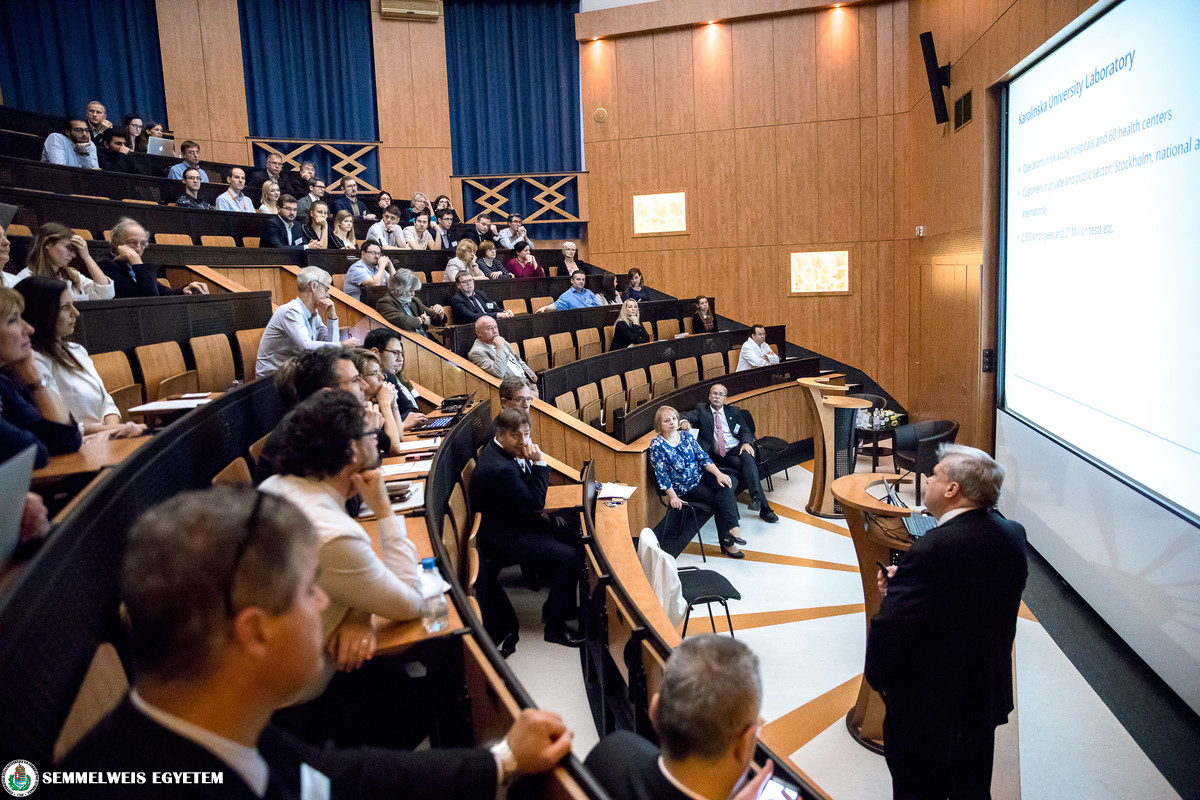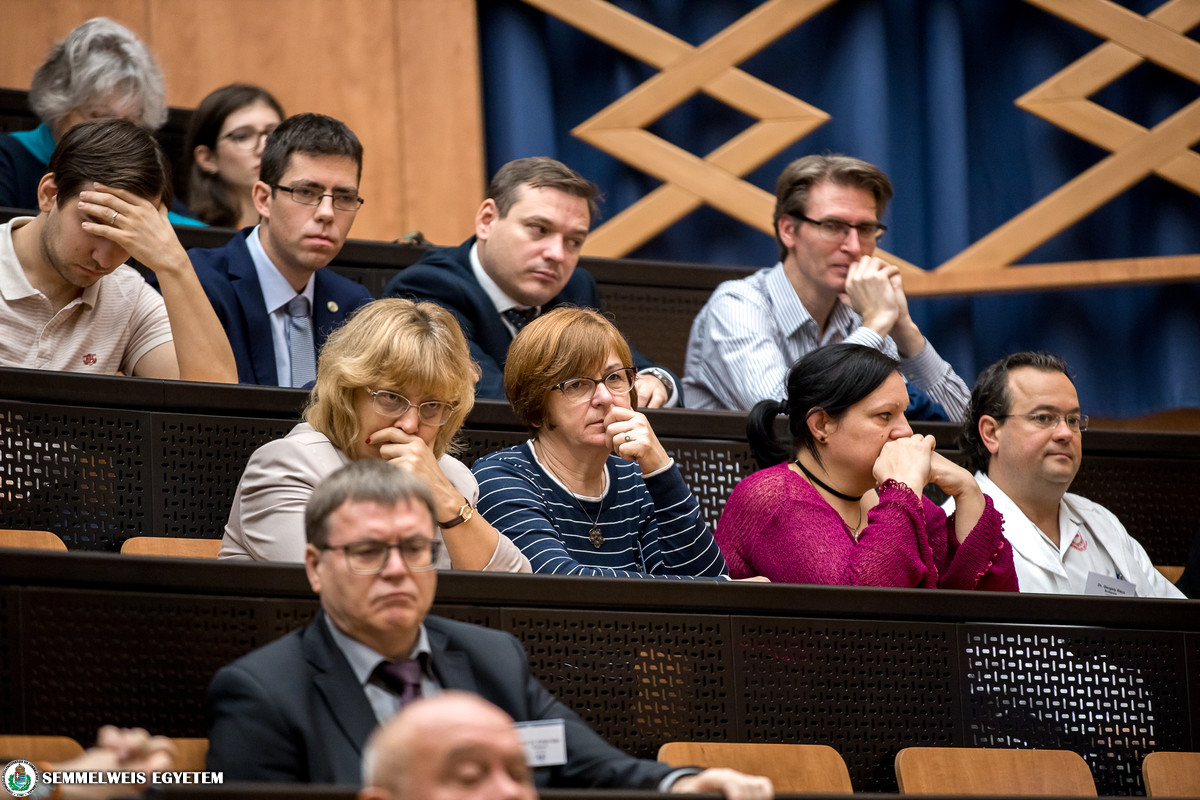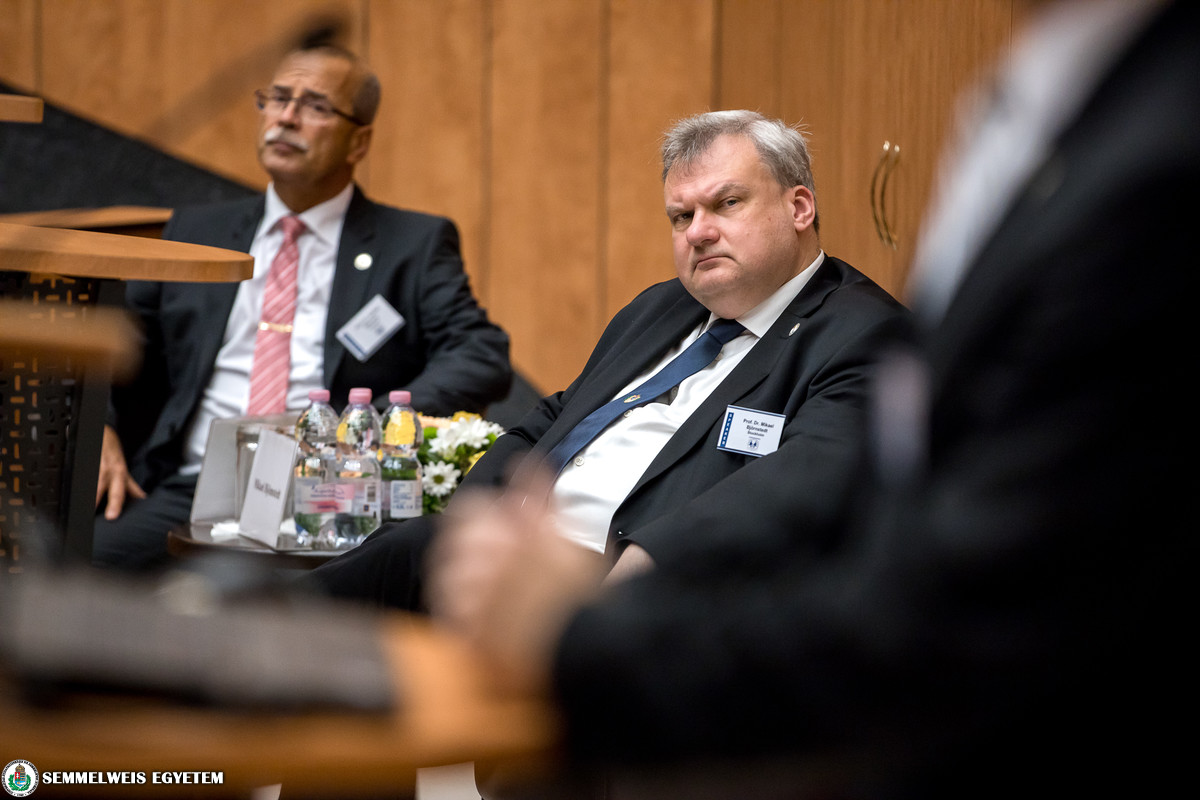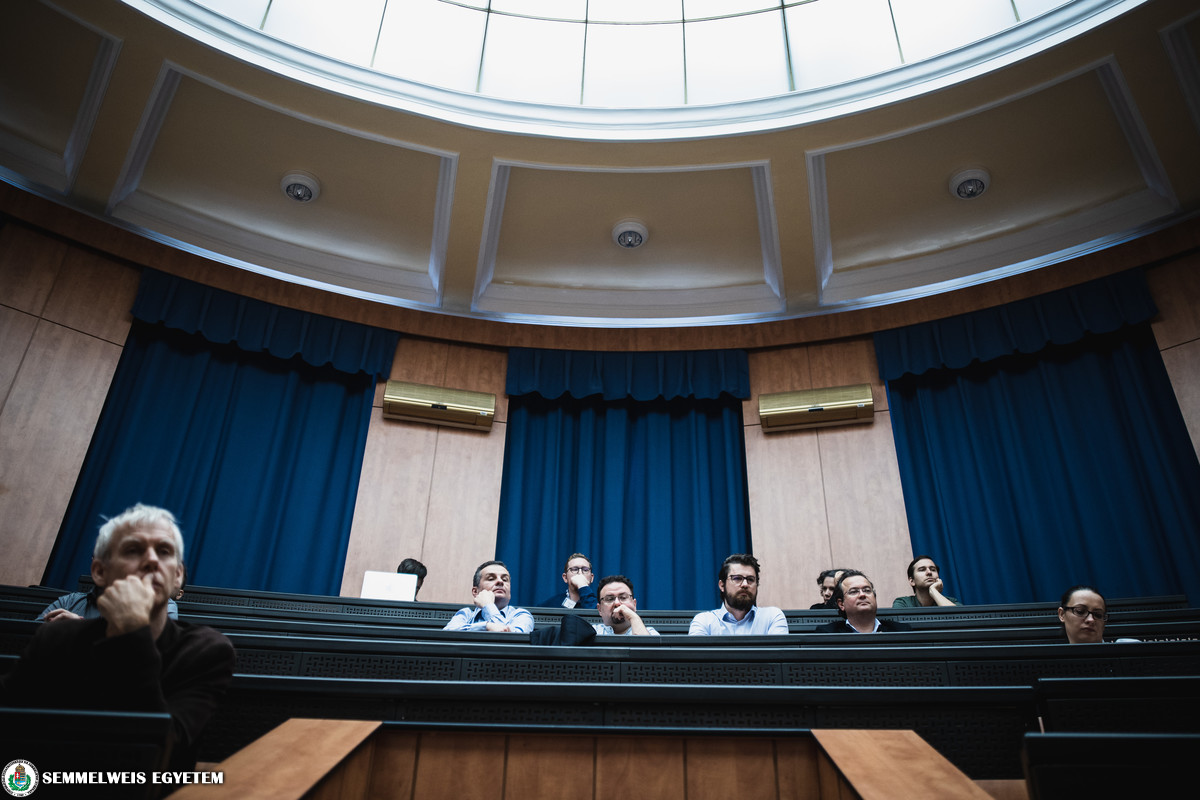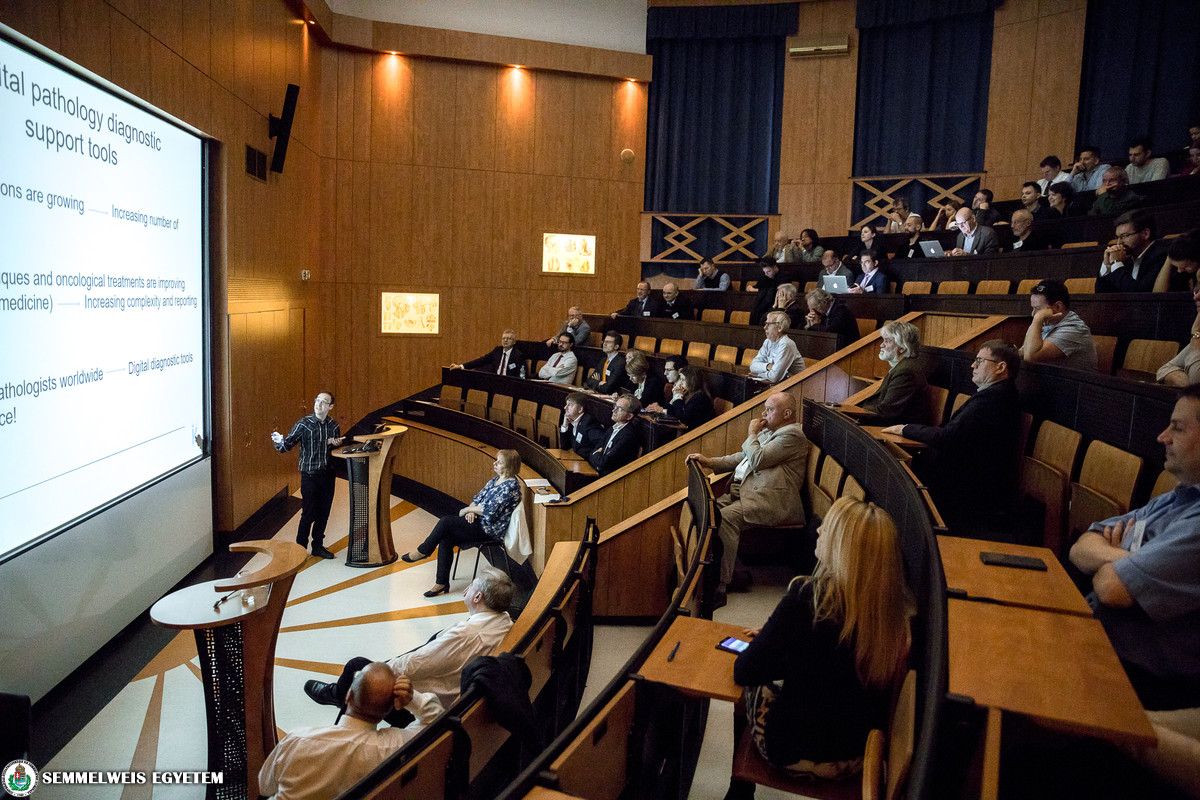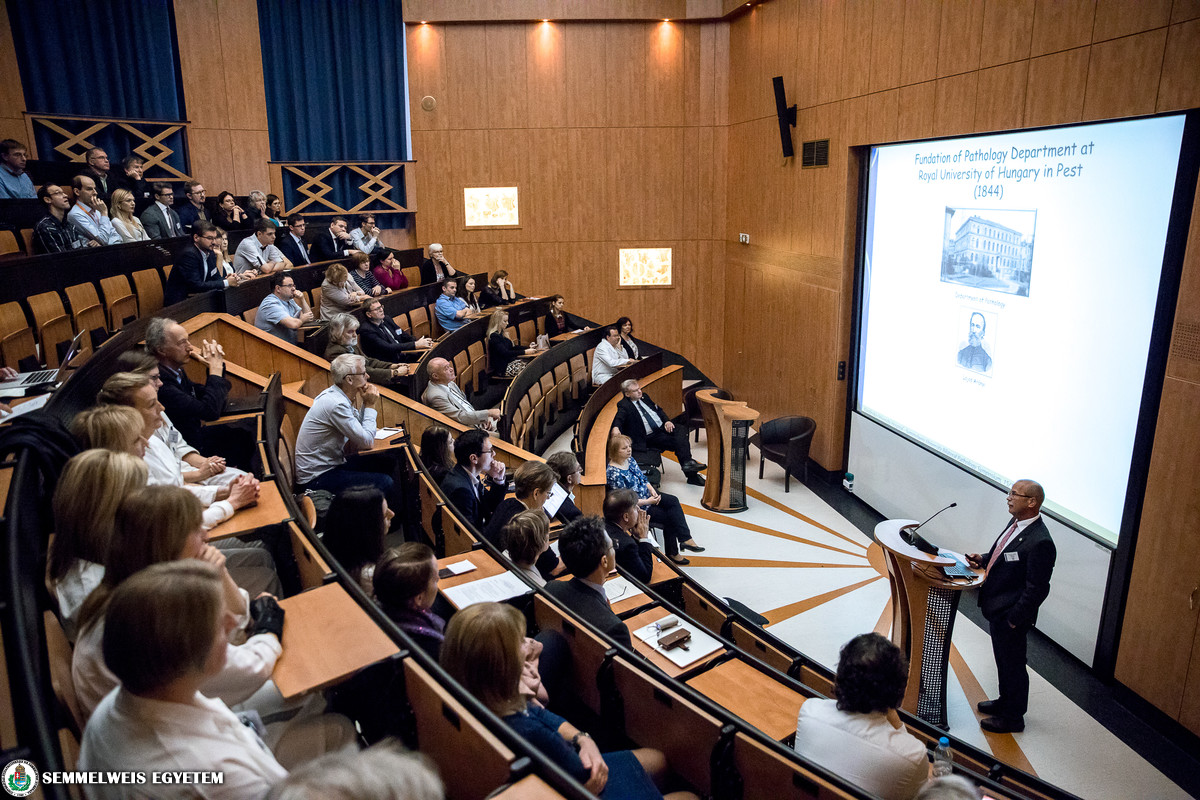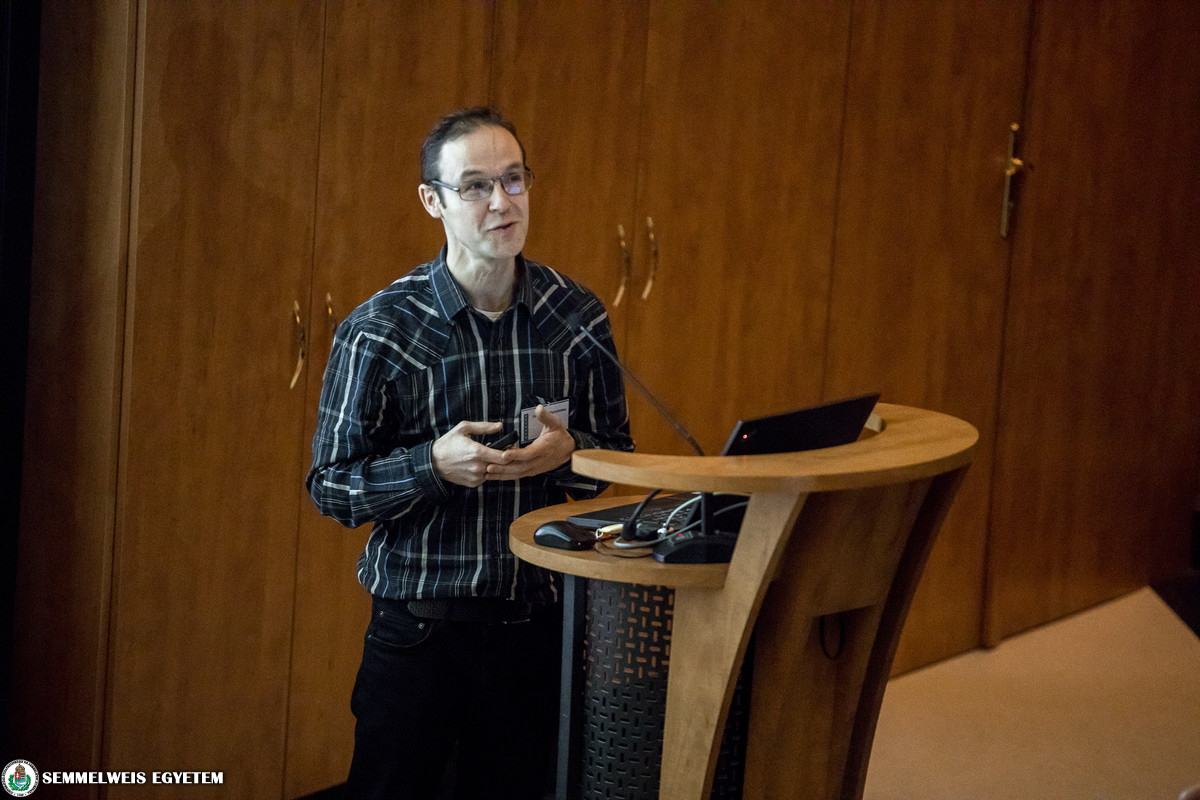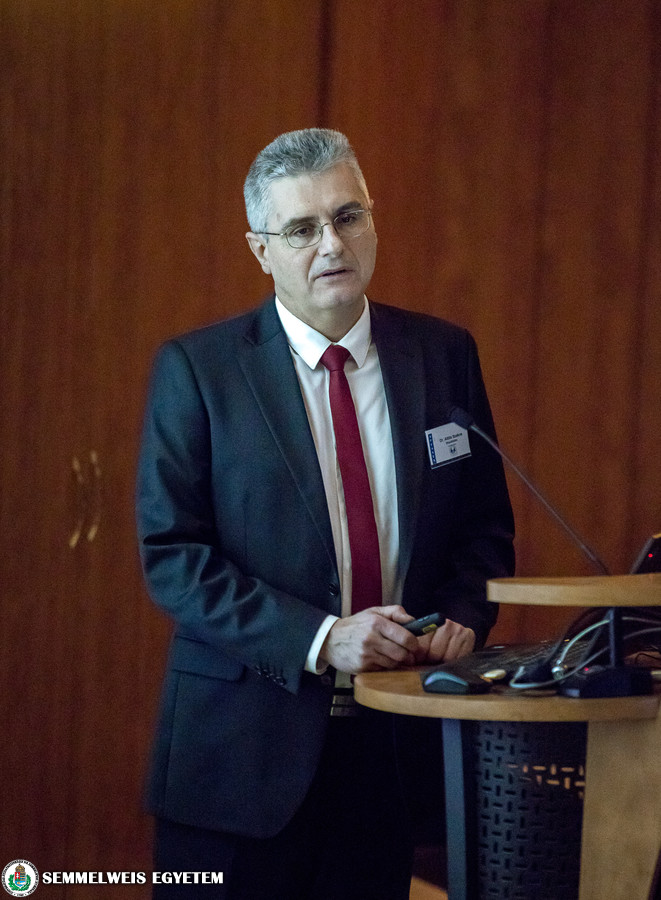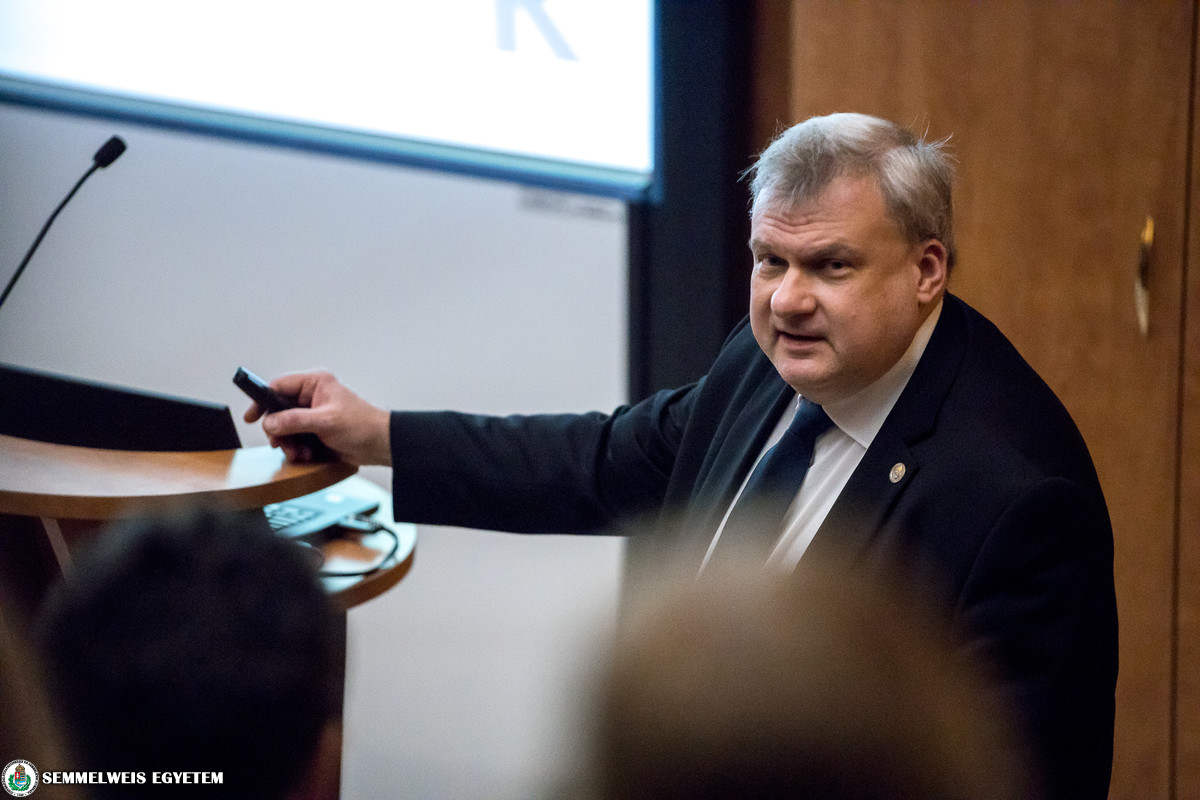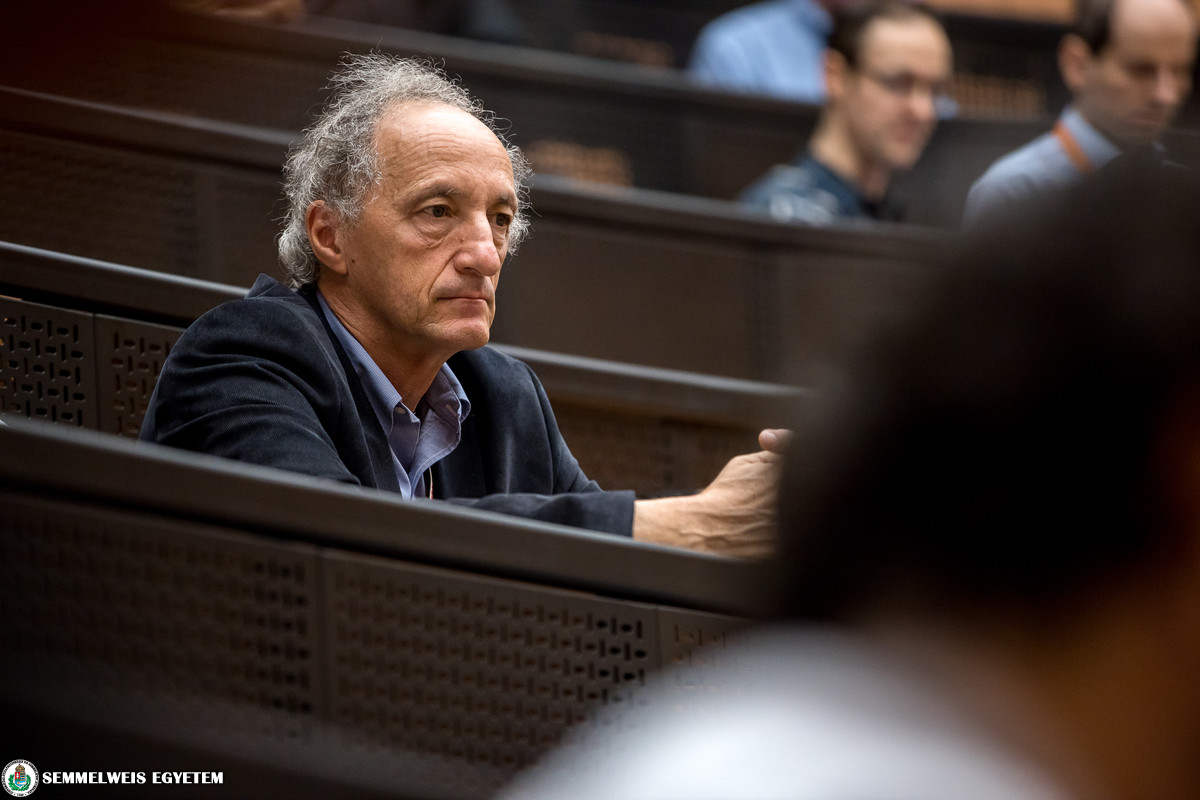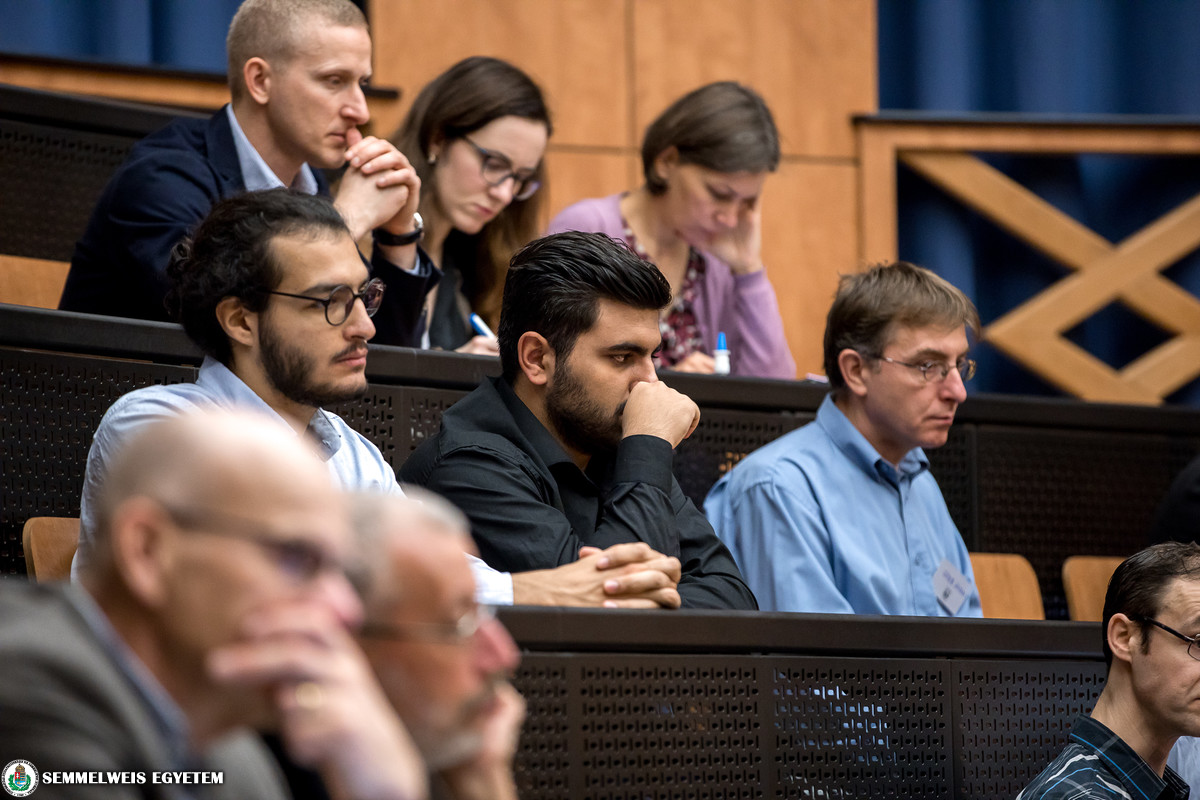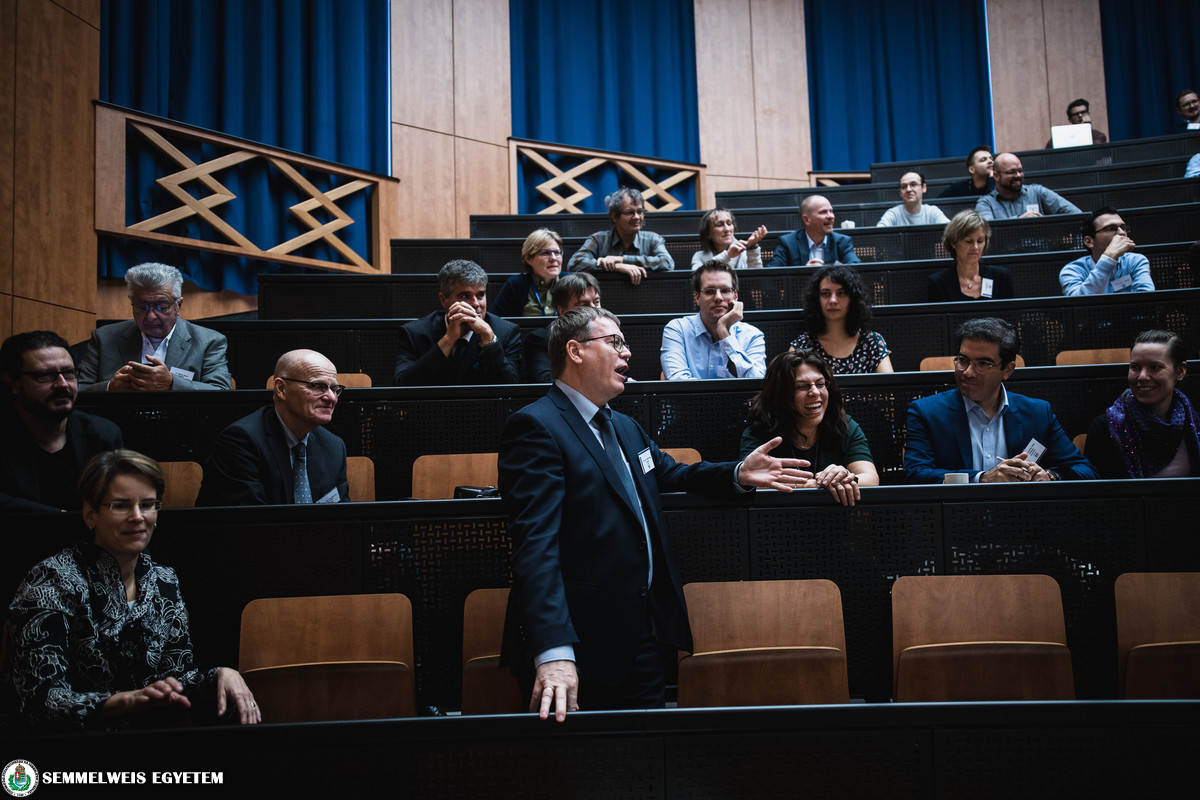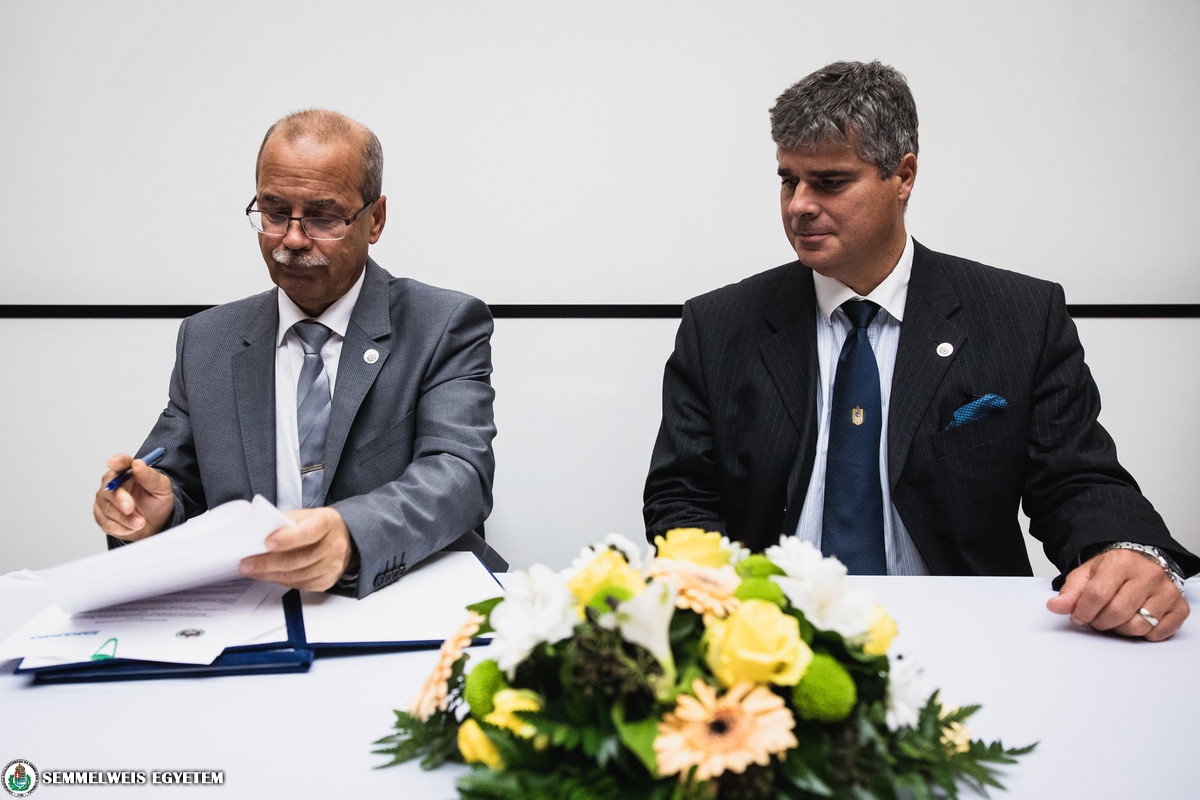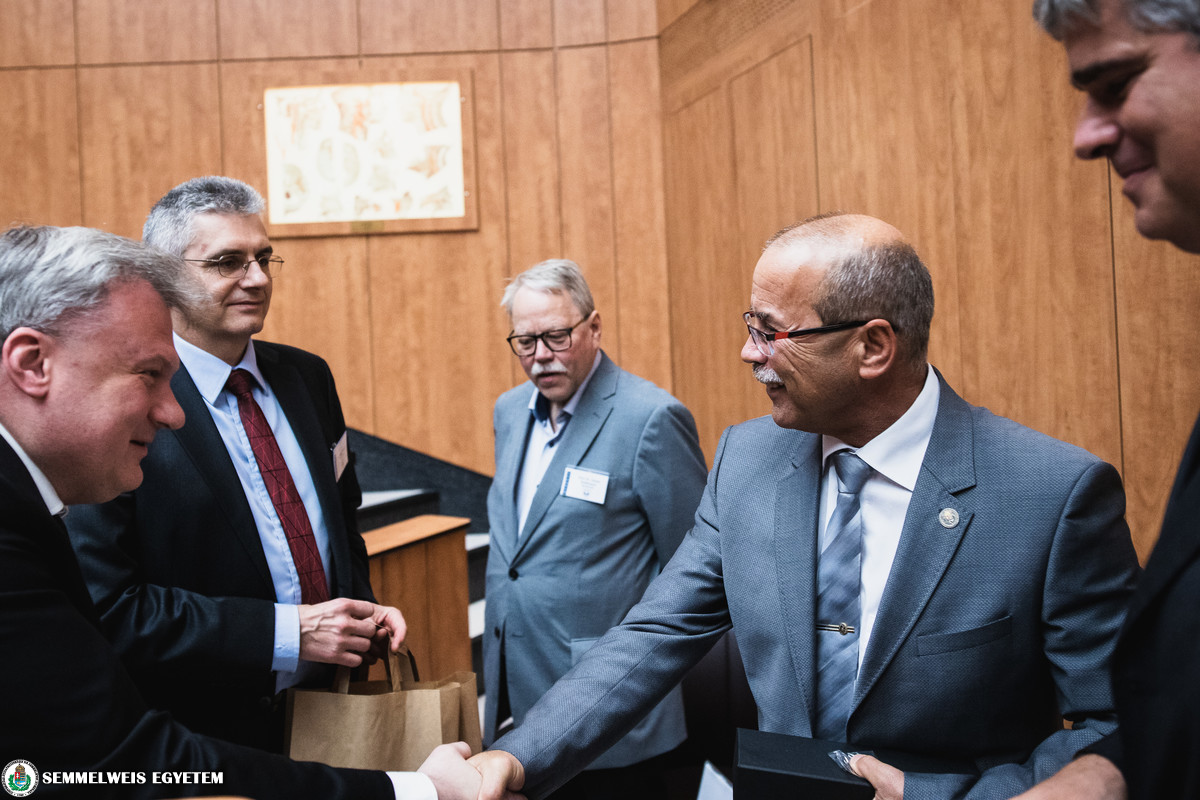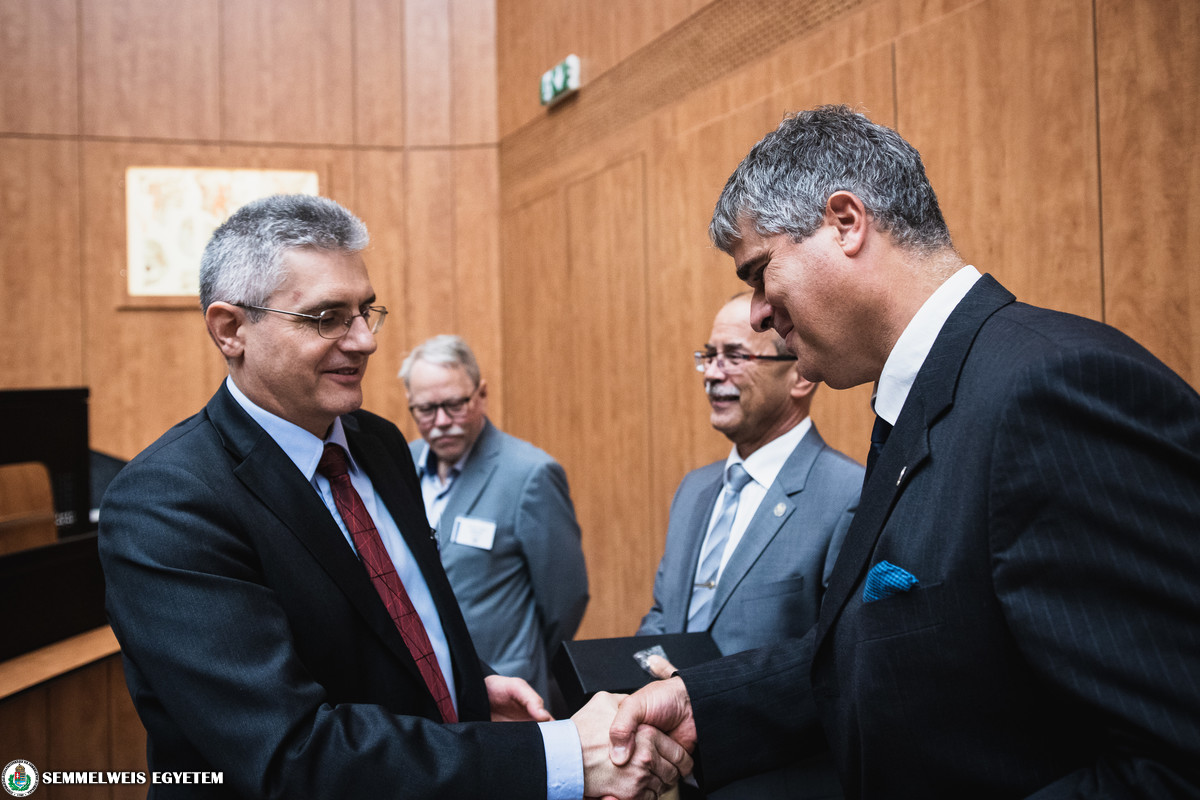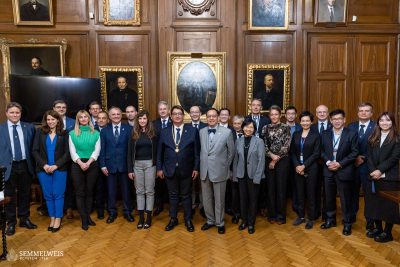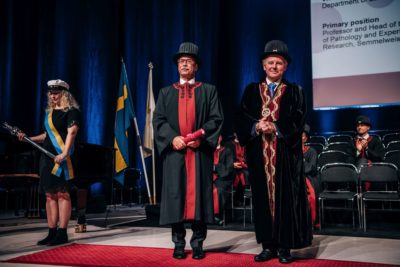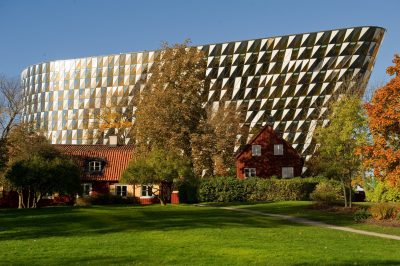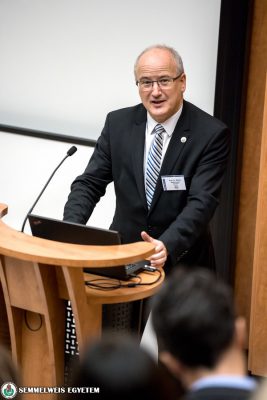 The opening speech of the symposium at the 1st Department of Pathology and Experimental Cancer Research was held by Dr. Miklós Kellermayer, Dean of the Faculty of Medicine highlighting the similarities between Semmelweis University and Karolinska Institute.
The opening speech of the symposium at the 1st Department of Pathology and Experimental Cancer Research was held by Dr. Miklós Kellermayer, Dean of the Faculty of Medicine highlighting the similarities between Semmelweis University and Karolinska Institute.
“Both institutes set the goal to advance in international rankings and the nearly decade-old partnership between us have made us natural allies in this respect,” he said.
He spoke about the currently ongoing curriculum reform, where pathology was a point of reference, as it is introduced halfway into the training and is considered to be the solid foundation of medical training linking theory with clinical education.
“This conference is an excellent example of this connection, as both educational and scientific topics are included,” Dr. Miklós Kellermayer said.
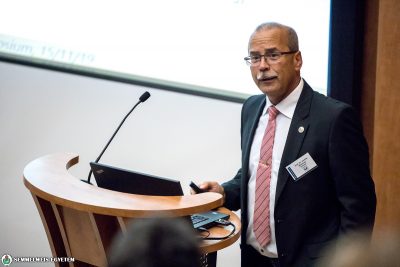 Dr. András Matolcsy, Director of the 1st Department of Pathology and Experimental Cancer Research gave a brief overview of the department, pointing out the fact that it was founded as the 4th institute of pathology in the world in 1844.
Dr. András Matolcsy, Director of the 1st Department of Pathology and Experimental Cancer Research gave a brief overview of the department, pointing out the fact that it was founded as the 4th institute of pathology in the world in 1844.
“Semmelweis University’s two departments of pathology conduct extensive educational activities in Hungarian, English and German, participate in resident training and manage an independent doctoral school. In addition, they are actively involved in research, including the fields of haemopathology, neuropathology and digital pathology,” he said.
Dr. Mikael Björnstedt, Director of the Clinical Pathology and Cytology Centre of Karolinska Institute, briefly spoke about the activities of the Institute in the field of pathology. In his opening words, he congratulated Semmewleis University on its 250th anniversary, pointing out that the Hungarian university is older than Karolinska Institute, which was founded in 1810.
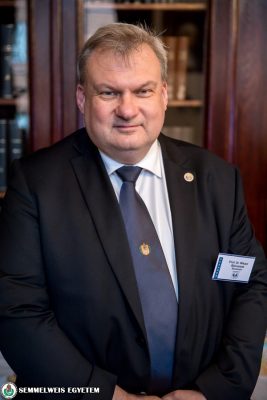 “The management of activities in the field of pathology belongs to the Karolinska University Laboratory, which is the biggest organizational unit of the Karolinska University Hospital. Our institution caters to four large hospitals in Stockholm and also collects samples from several smaller health care institutions. The size of our institution has doubled in the past 10 years, which is due in great part to our successful collaboration with Semmewleis University, which I hope to extend and deepen in the years to come,” Dr. Mikael Björnstedt said.
“The management of activities in the field of pathology belongs to the Karolinska University Laboratory, which is the biggest organizational unit of the Karolinska University Hospital. Our institution caters to four large hospitals in Stockholm and also collects samples from several smaller health care institutions. The size of our institution has doubled in the past 10 years, which is due in great part to our successful collaboration with Semmewleis University, which I hope to extend and deepen in the years to come,” Dr. Mikael Björnstedt said.
The partnership between Semmelweis Univeristy and Karolinska Institute is over a decade old and has been concentrated mainly on pathology and cardiology in the past few years. Further platforms of cooperation have been generated by the two institutions’ membership in the organisations EIT Health and Eurolife.
The two-day-long symposium welcomed over 100 participants and offered nearly 30 presentations, offering insight into topics of high priority for both institutions in the field of pathology, such as graduate and postgraduate education, diagnostic pathology, molecular pathology and various areas of research.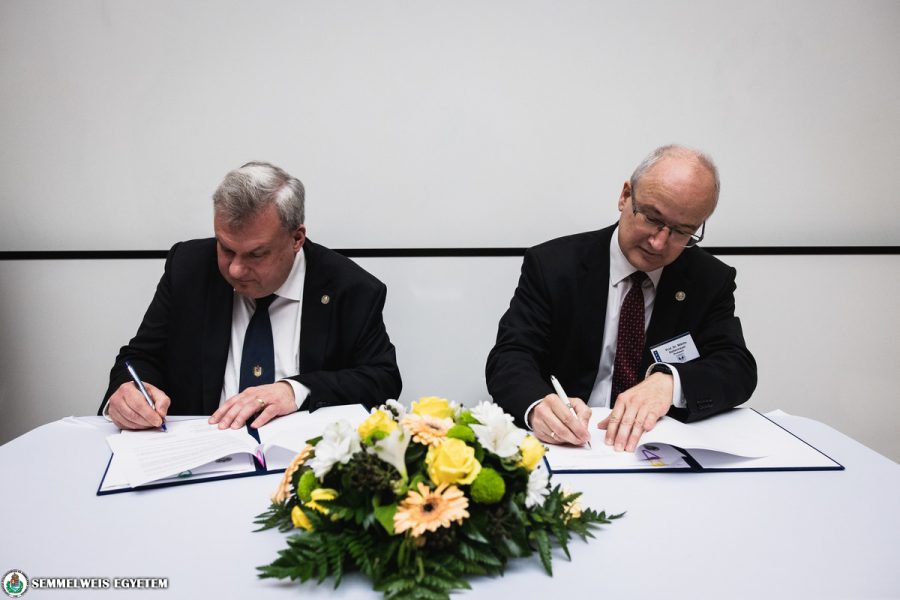
As the closing act of the event, the leaders of the two institutions signed a cooperation agreement aiming at further expanding professional relationships both in education and research.
“The goal of this agreement is to explore collaborative opportunities to a greater extent and to identify further areas overlapping in the research and diagnostic profiles of the two institutions. We also strive to submit joint EU research applications in the future. There is already an exchange programme between the two institutions, which allows physicians and assistants to spend time at the partner institution. Furthermore, there has been active scientific collaboration between Semmelweis University and Karolinska Institute, with several joint publications as a result,” Dr. András Matolcsy said after the signing ceremony.
This year’s bilateral symposium aims to be the first of a new tradition, with similar conferences scheduled to take place every year, in order to further strengthen the cooperation between the two institutions.
Tamás Deme
Photo: Attila Kovács – Semmelweis University; András Dimény
Translation: Ágnes Raubinek
